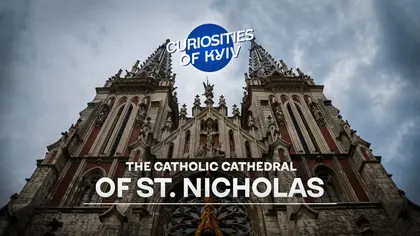St. Nicholas Church is one of the most beautiful buildings in Kyiv. It is located in the very center of the city on Velyka Vasylkivska Street. The church was designed in 1899-1909 with the participation of the famous architect Vladyslav Horodetsky (Władysław Horodecki). The 55-meter-high Gothic-style masterpiece with towers and perfectly proportioned spires resembles an oblong Gregorian cross. It is interesting that the architect creatively "reflected" the façade of the Kyiv Church of St. Nicholas to resemble the world-famous Votivkirche, one of the most beautiful buildings in Vienna, which, in turn, was built with a reference to the French Notre-Dame de Paris.
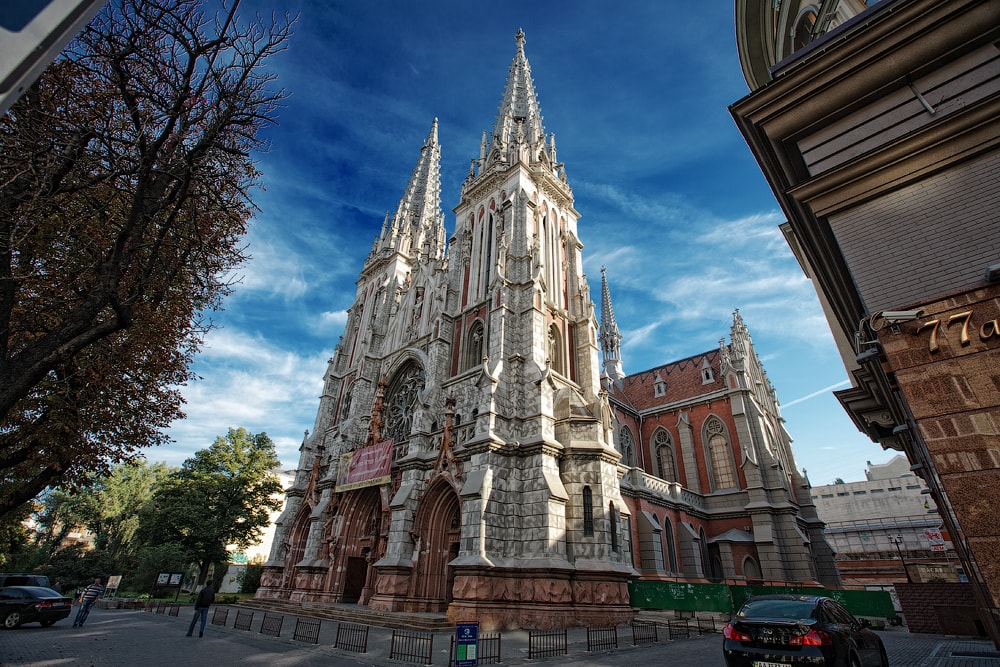
St Nicholas Church is the second Catholic cathedral built in Kyiv. The first cathedral, St Alexander's, was located in the Old Town and could accommodate only about 1,000 worshippers. In 1898, representatives of the Catholic community of Kyiv asked the city authorities to provide land for the construction of a second church, as the number of Catholics in the city was approaching 40,000, and the small building of St Alexander's Church could no longer accommodate those wishing to attend Mass - a Catholic service. The Kyiv Catholics supported their request to allocate land for a new church with a strong argument: the name of the new church, St Nicholas', would honour the memory of the visit of "Their Imperial Majesty" Nicholas II to Kyiv. And the authorities agreed.
JOIN US ON TELEGRAM
Follow our coverage of the war on the @Kyivpost_official.
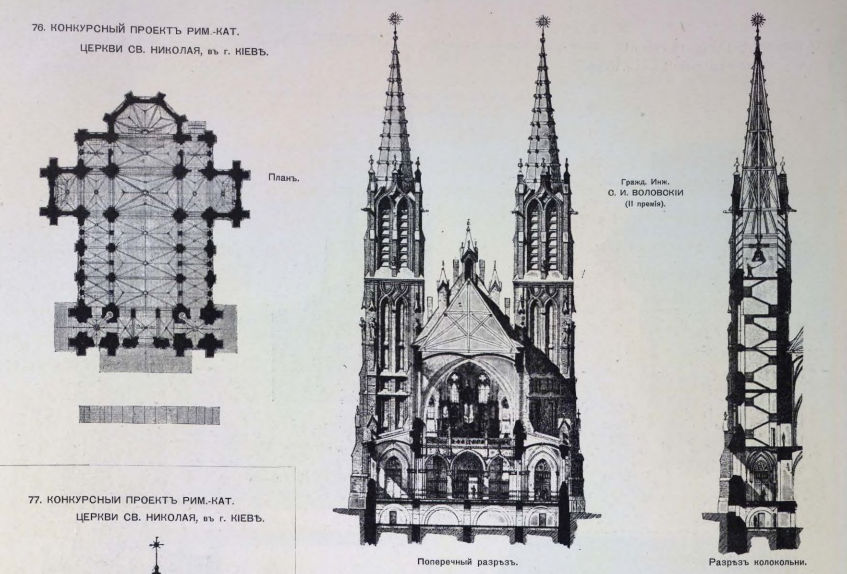
After a competition for architectural designs, the project by 24-year-old Stanislav Volovskyi was accepted for implementation. However, due to his young age and lack of experience, the management and supervision of the construction was entrusted to Vladyslav Horodetsky, who was already considered one of the best architects in the city at the time. The sculptural decoration was entrusted to the famous Italian artist Elio Sala.
On 21 August 1899, the ceremony of laying the foundation stone of St Nicholas Church took place. Its construction lasted for a very long time - more than 10 years. This was due to the fact that the soil under the building was extremely challenging. The ground had a slope towards the floodplain of the Lybid River, resulting in excessive moisture content. The builders had to find a way to solve this problem. So, for the first time in Europe, the foundations of the church were laid with concrete piles, invented by the Kyiv engineer Anton Straus, and for the first time such new material as reinforced concrete was used.
Horodetsky added a number of important details to Volovsky's design: the rose window that adorns the façade, the tower above the transept, and increased the amount of façade decor by adding figures of snakes, griffins, and other mythical creatures. In the middle of the entrance portal is a statue of the Virgin Mary with the Child Jesus. On the pediment there is a crucifix, sculptures of the Virgin Mary, Mary Magdalene and John the Baptist. The whole ensemble is crowned with a pediment depicting the Archangel Michael, the patron saint of
Kyiv.
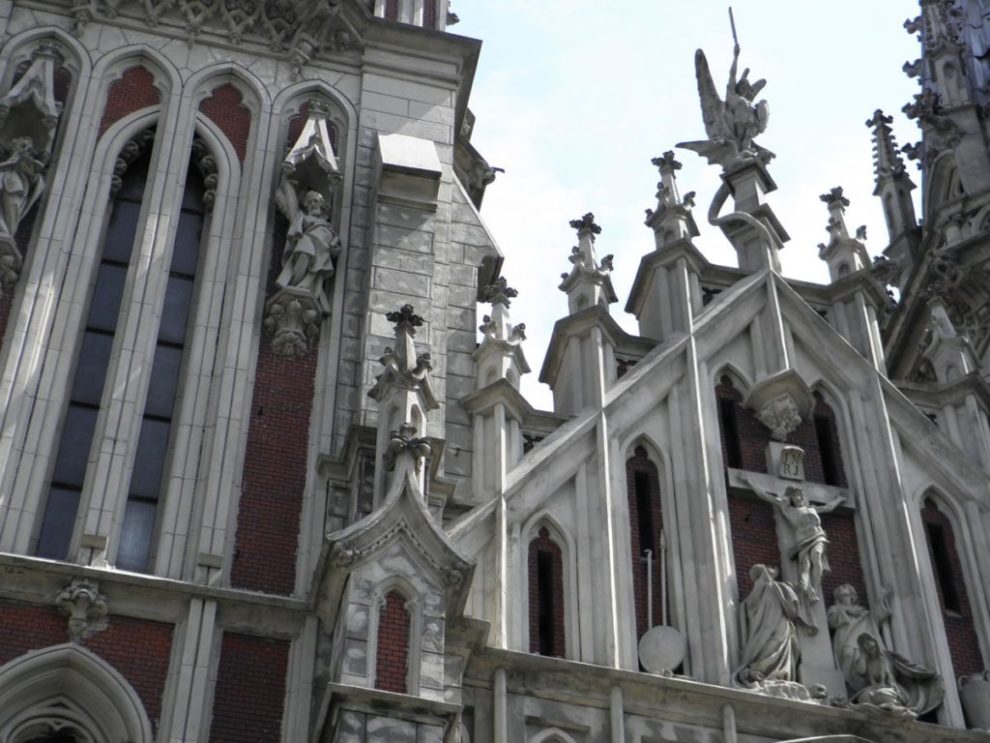
The altar was intended to be designed in the Gothic style and crafted from the famous Carrara marble in Florence, but there was not enough money for it, so an oak altar with gilding was installed. In fact, almost all the interior decoration was made of oak. The doors of the main entrance and the side portals were also made of oak. They were complemented by Gothic figured moldings and carvings.
The beautiful terracotta floor, laid out in the form of a large chessboard, existed until the end of the 1940s, but it has not survived to this day. Similarly, the marble ambo and the marble statues of Christ and the Virgin Mary, brought from Rome as a gift from Count Felix Sobanski, have also not been preserved. They were barbarically destroyed during Soviet times.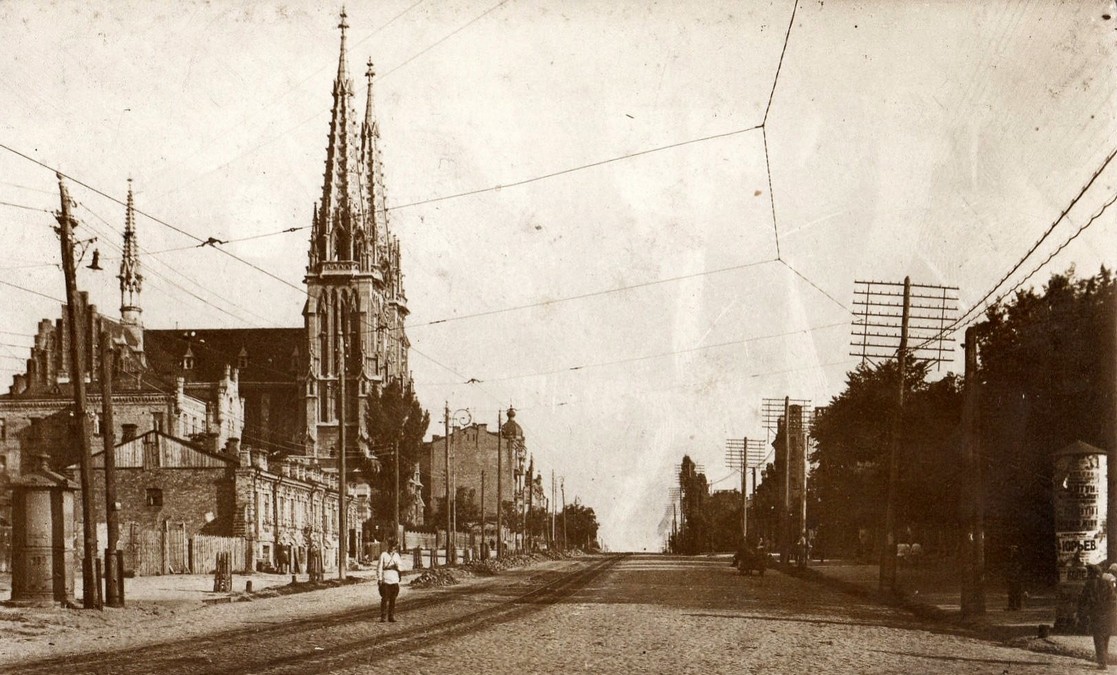
There were 26 pews in the church designed in a strict Gothic style. The organ, an obligatory attribute of a Catholic cathedral, was brought from Austria. To illuminate the cathedral, 6 bronze chandeliers with crystal decoration and 10 sconces were used, the light of which, together with the stained-glass windows, created a unique aura of a Gothic church. There were also many candlesticks in the church. For example, there were 10 gilded and silver candlesticks on the main altar. The cathedral was decorated with numerous incredibly beautiful stained-glass windows and paintings, which, unfortunately, have not survived to this day.
The church was built exclusively on donations from the Catholic community of Kyiv. The work was supervised by a well-known Kyiv contractor Lev Ginzburg, while the patron and chairman of the cathedral construction committee, Leopold Yankovskiy, personally contributed 10,000 karbovantsi three times, as did the committee members Counts Branicki and Potocki. Wealthier donors contributed 1000, 10000, 25000 karbovantsi, and ordinary worshipers 1, 5, 10, 20, 50.The names of the benefactors, both ordinary parishioners and wealthy patrons, were published in Kyiv and Warsaw newspapers at the time.
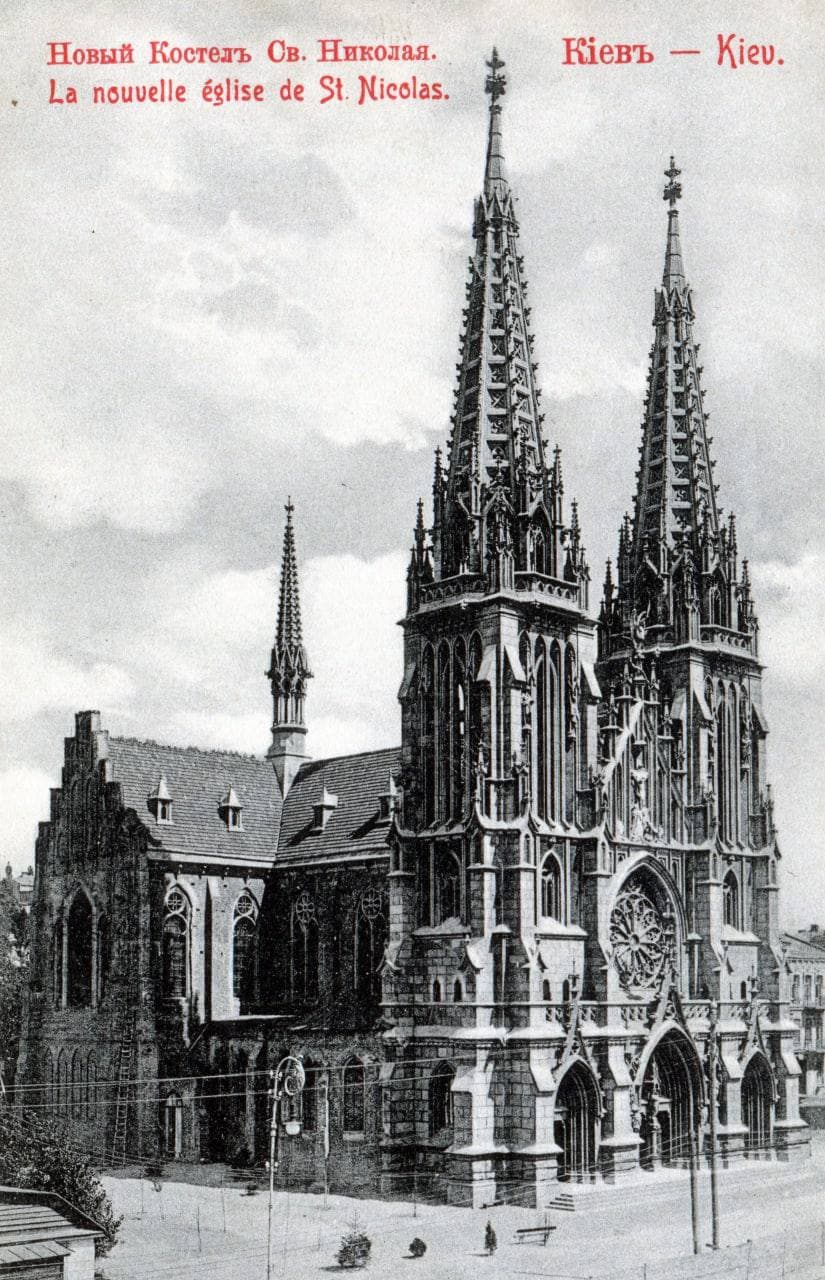
The church was inaugurated on St Nicholas Day on 6 (19) December 1909. The Catholic community of Kyiv managed to continue worshiping in the church until 1936. Even though the priests of the church, as well as the faithful, were subjected to repression, as were representatives of other faiths. In 1938, the Soviet authorities officially closed the church. After that, the church building was used as a warehouse for various organizations, and the property was looted. Gilded and silver communion chalices, precious icons, and many other valuable items that had been lovingly and respectfully donated by the faithful over the decades were confiscated.
During the Second World War, the church suffered from artillery shelling and fire, which significantly damaged the decor. In the 1950s, the church was renovated and converted into the State Regional Archive, at that time some of the bas-reliefs were destroyed. Valuable stained glass windows went missing during restoration work between 1954 and 1957. In 1956, the church was included in the list of state-protected monuments, but it was removed from the list in 1963. During the Soviet period, special equipment was placed on the roof of the church to block the signal of "hostile" Western radio stations such as BBC or Svoboda. Later, these devices were removed from the roof.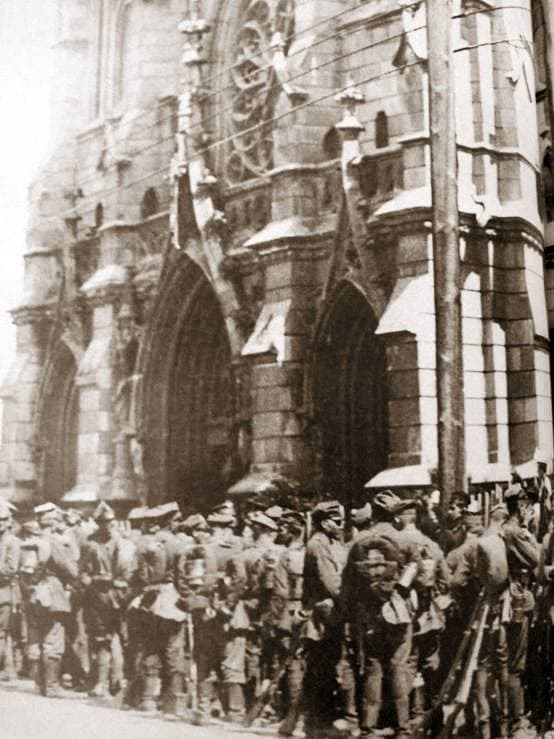
Only in the 1970s, thanks to the determination and persistence of the city's community, the church was put under long-term restoration. In 1978, by order of the Council of Ministers of the Ukrainian SSR, the church building was given to the newly established Kyiv House of Organ and Chamber Music. For this purpose, a Rieger-Kloss organ with 3945 pipes and 55 registers, made of metal and expensive black and red wood, was purchased in Czechoslovakia, it was one of the best concert organs in Ukraine. The organ was situated on low platforms inside the church, occupying the space of the main altar and essentially being at the same level as the audience, which made the sound particularly expressive.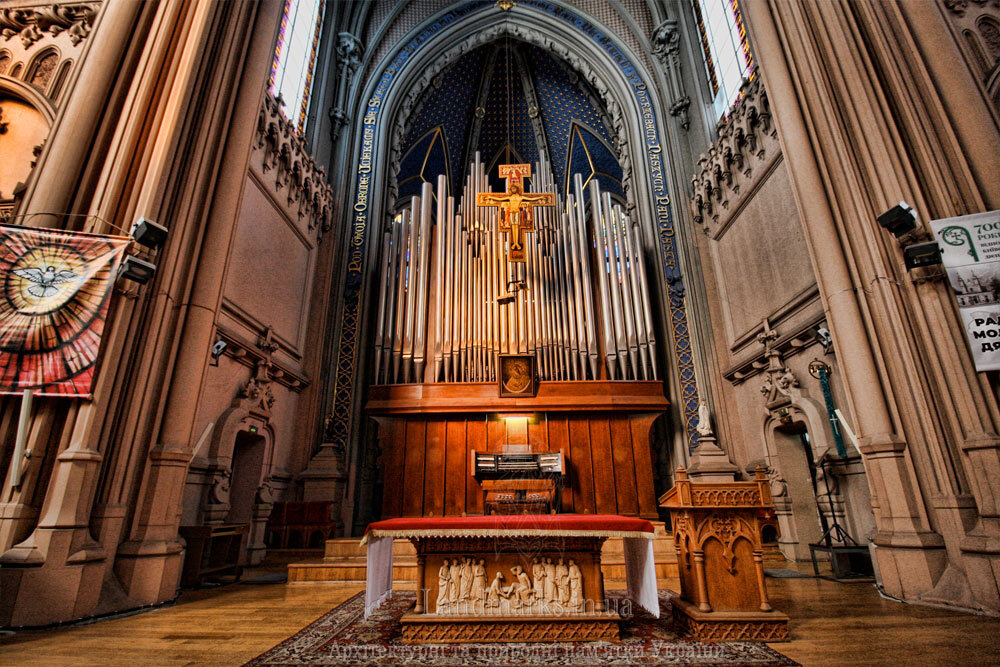
In 1981, after the completion of restoration works, the church began functioning as a concert hall. Unfortunately, the unique organ was destroyed. On September 3, 2021, a fire broke out in the church due to a short circuit in the electrical wiring inside the wooden casing of the organ, which was over 40 years old. The fire spread to two floors of the church and the roof, causing significant damage to the covering of the building and completely destroying the organ.
Since Ukraine's independence, a Roman Catholic service was held at St Nicholas Church for the first time in January 1992, the first time in more than half a century. On 25 June 2001, during his visit to Ukraine, Pope John Paul II visited the church. Today, despite the ongoing restoration work, the church holds daily services in Ukrainian, Polish, Spanish and Latin.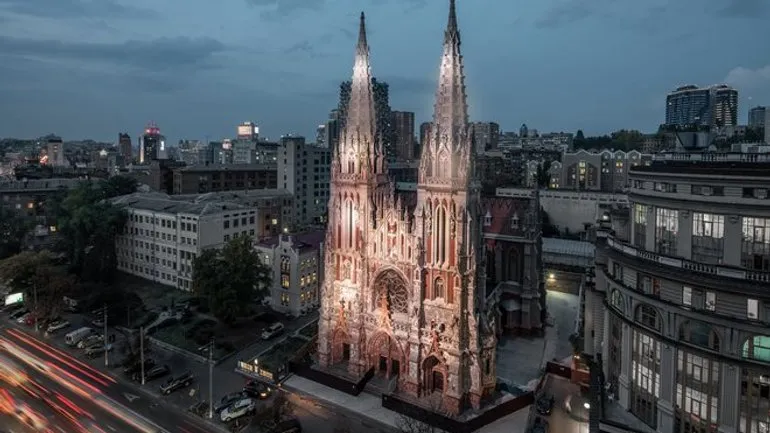
The church is located at: 75 Velyka Vasylkivska St., Kyiv.
The schedule of services can be found on the official website.
You can also highlight the text and press Ctrl + Enter


